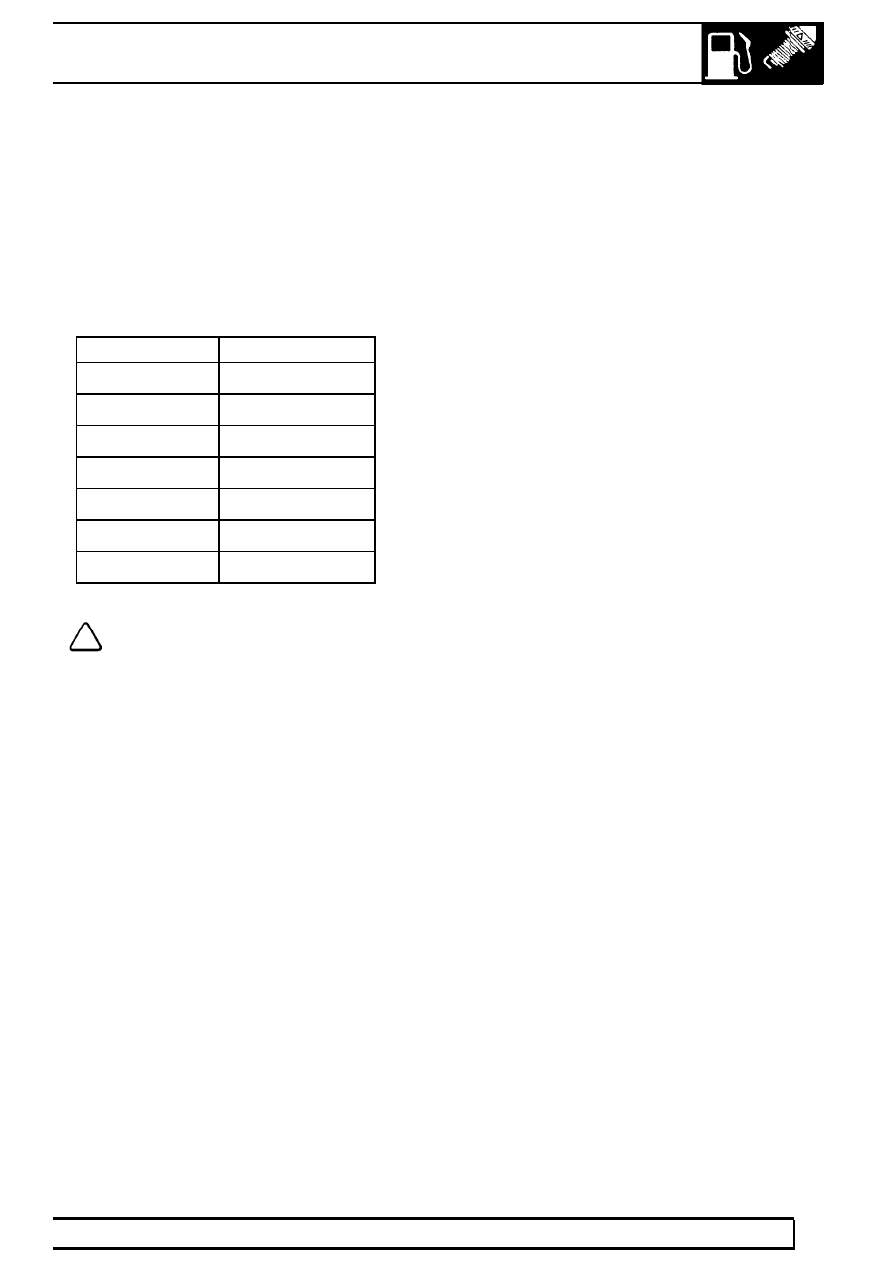Range Rover. Manual - part 95

LAND ROVER V8
47
DESCRIPTION AND OPERATION
If the sensor fails, the ECM uses a substitute software
routine that changes default value during warm up,
based on the signal from the inlet air temperature
sensor. When the software model reaches a coolant
temperature of 60
°
C (140
°
F) the ECM implements a
fixed default value of 85
°
C (185
°
F). The ECM coolant
model also forms part of the diagnostics that is
performed for detecting a temperature sensor fault, as
well as open and short circuit tests.
Temperature
Voltage
-50
°
C
5V
-20
°
C
4.8V
10
°
C
4.2V
40
°
C
2.8V
70
°
C
1.4V
100
°
C
0.6V
130
°
C
0.2V
NOTE: All voltages listed are approximate.
A coolant temperature circuit failure may result in the
following symptoms:
•
Poor cold and warm/hot starting and driveability.
•
Instrument pack temperature warning lamp will
illuminate.
•
MIL will be illuminated.
•
Temperature gauge reads excessively hot or
cold.
•
Cooling fan will not run
•
SAI pump will operate at engine start up even
when engine is hot (NAS with secondary air
injection system only).
The ECT sensor can fail in the following ways, or
supply an incorrect signal:
•
Sensor open circuit.
•
Short circuit to vehicle supply.
•
Short circuit to earth.
•
Incorrect mechanical fitting.
•
Signal fixed above 40
°
C (140
°
F) will not be
detected.
•
Signal fixed below 40
°
C (140
°
F) not detected.
Should a malfunction of the component occur, the
following fault codes may be evident and can be
retrieved by Testbook:
•
P0116 - (Signal differs too much from
temperature model for longer than 2.54s)
•
P0117 - (Open circuit or short circuit to battery
supply)
•
P0118 - (Short circuit to ground)